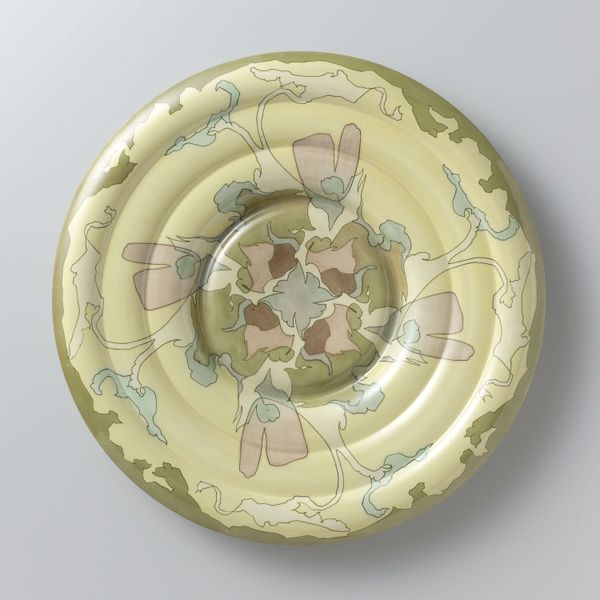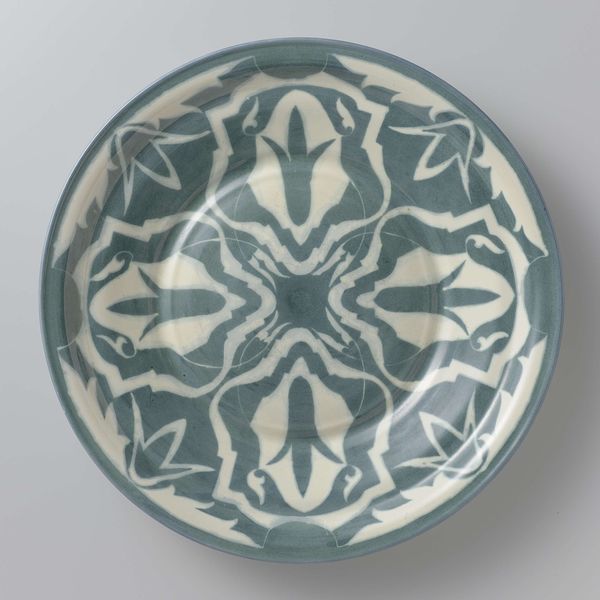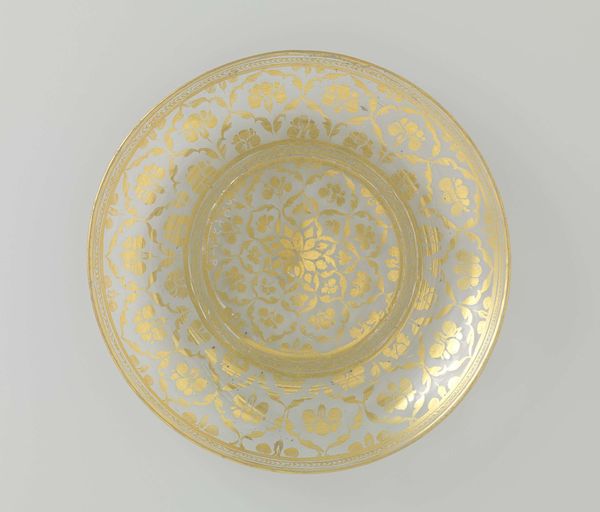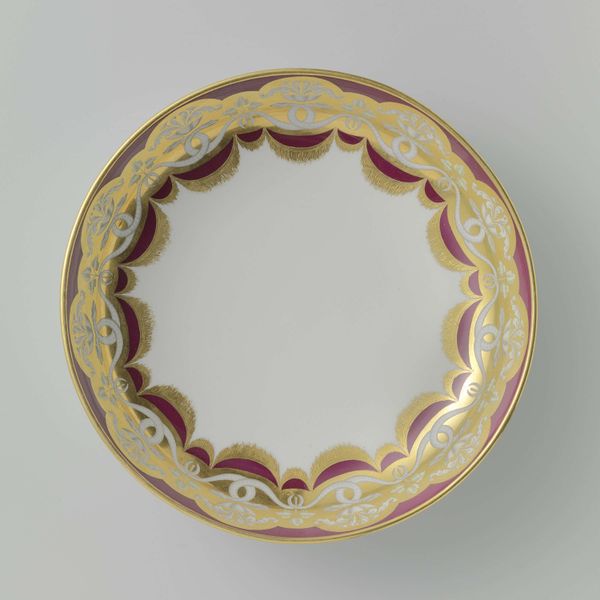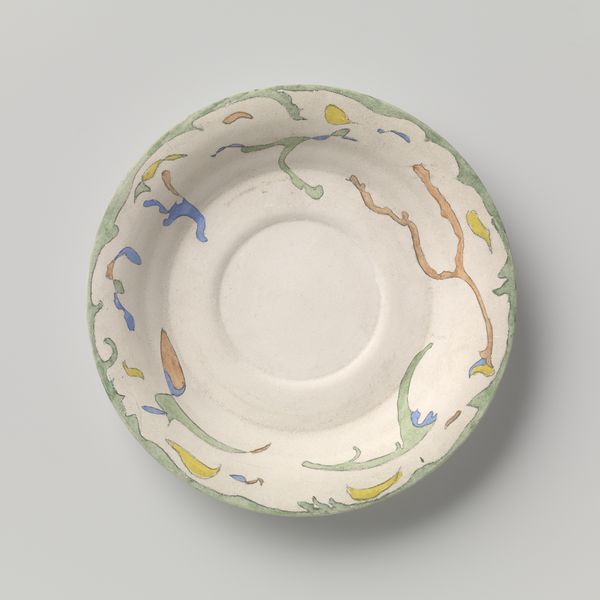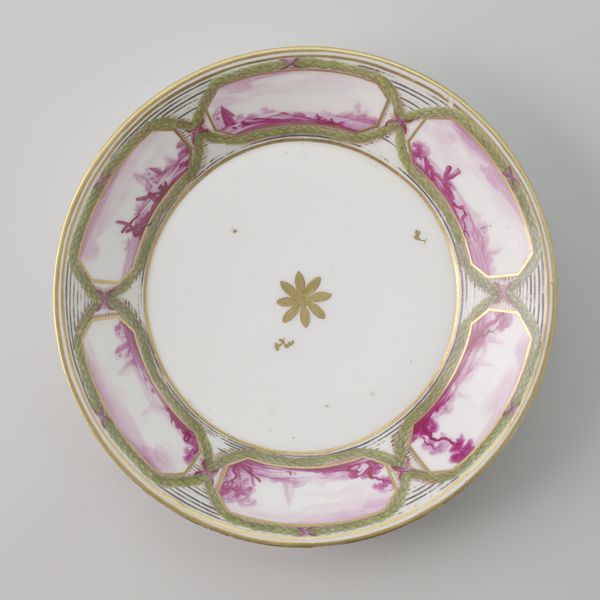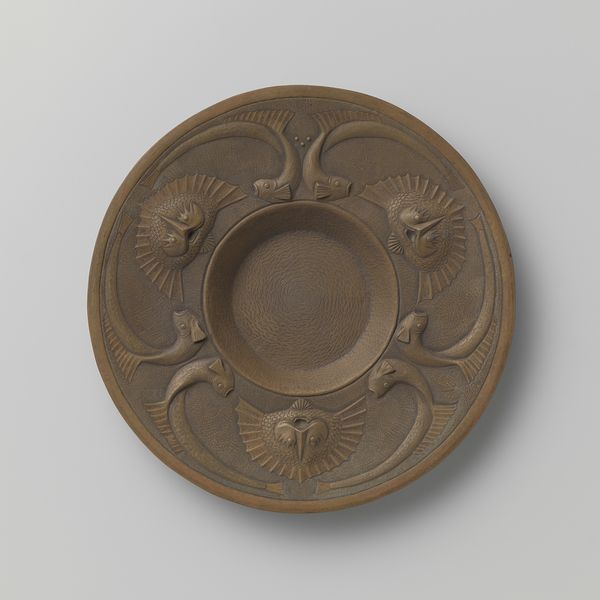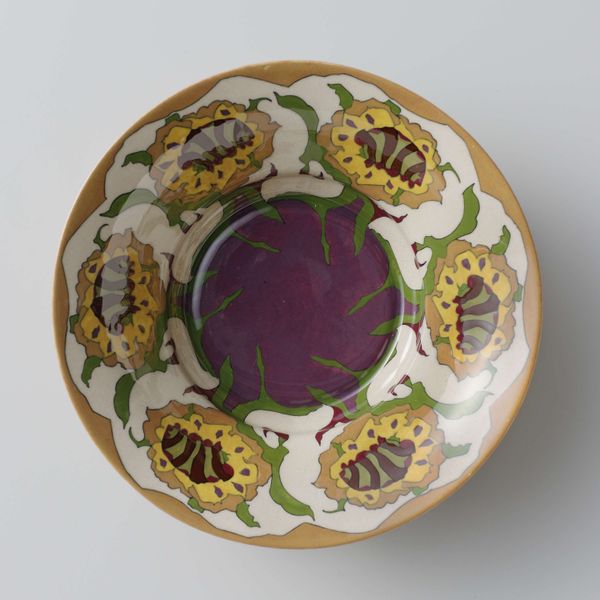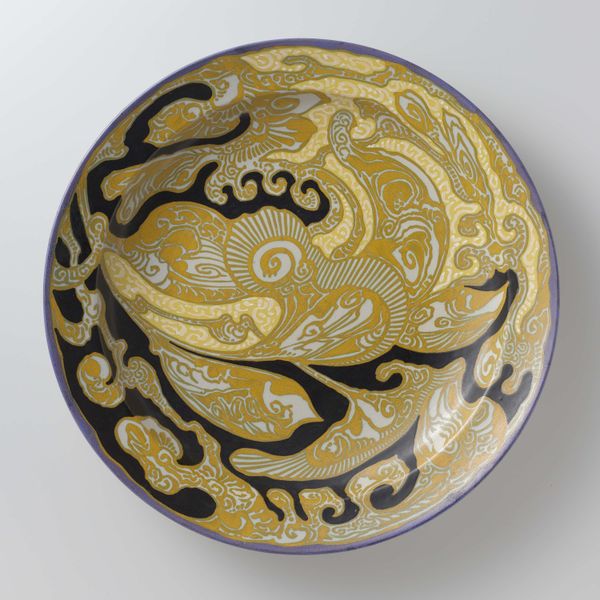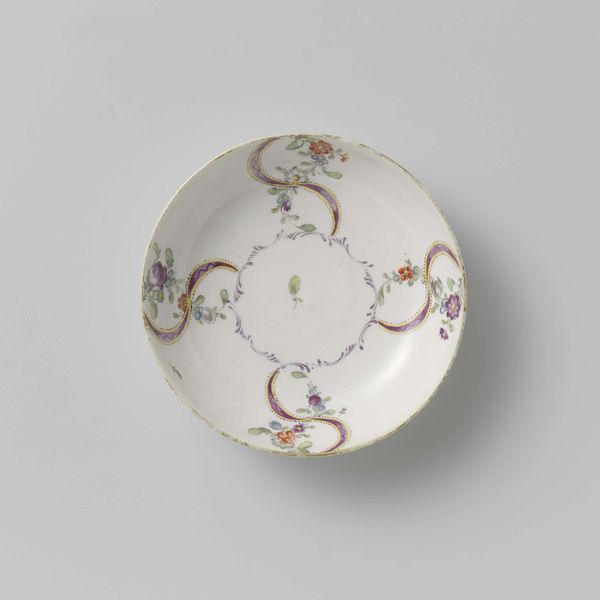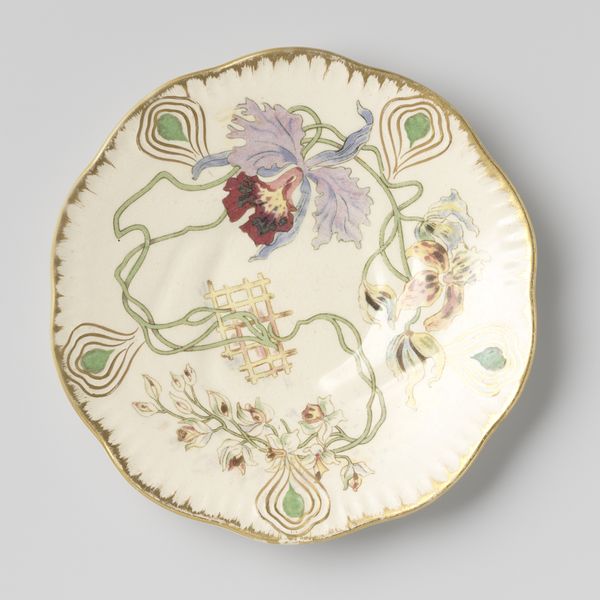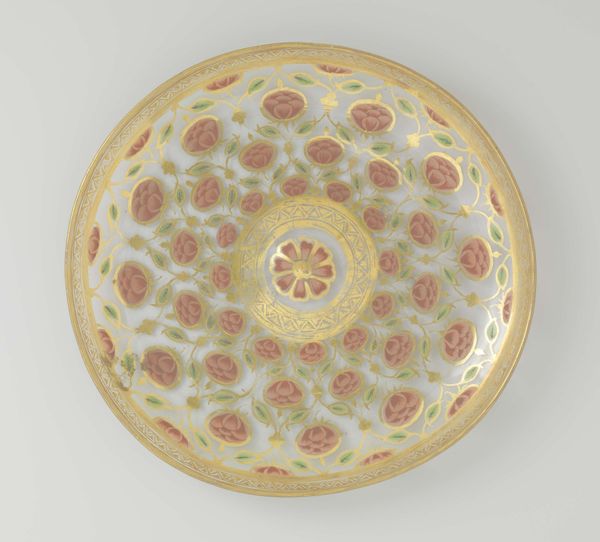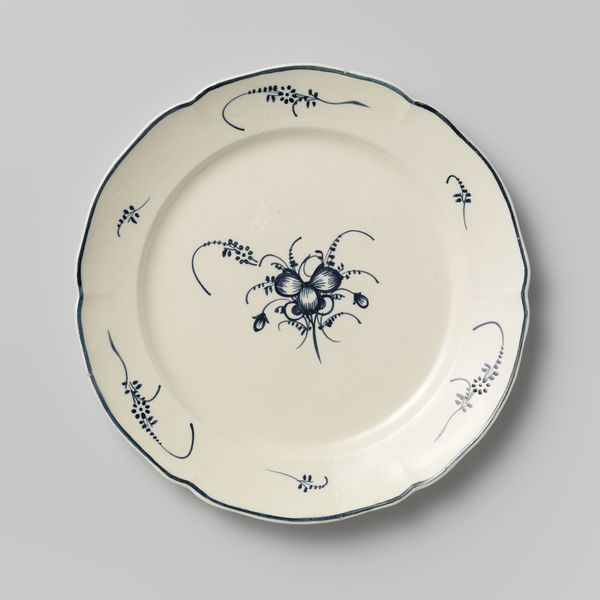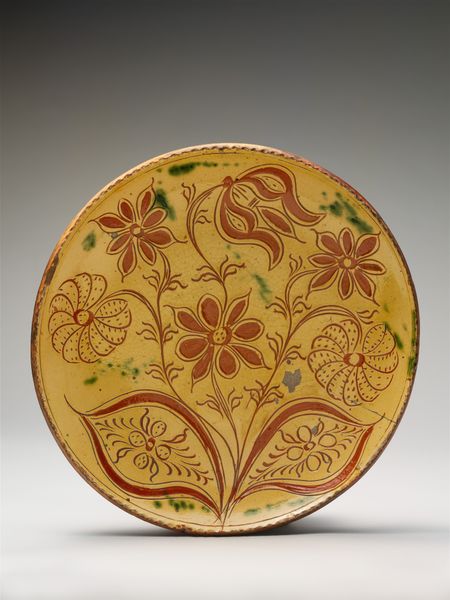
ceramic, earthenware
#
art-nouveau
#
ceramic
#
earthenware
#
stoneware
#
ceramic
#
decorative-art
Dimensions: diameter 27.4 cm, height 2.2 cm
Copyright: Rijks Museum: Open Domain
Editor: This is a ceramic wall plate made in 1887 by N.V. Haagsche Plateelfabriek Rozenburg, titled "Wandbord met gestileerd bladmotief," featuring a stylized leaf motif. I’m immediately drawn to the almost hypnotic symmetry of the design. What formal qualities stand out to you? Curator: The most striking formal quality is indeed the radial symmetry, organizing the composition. Note the limited palette, a sophisticated interplay between the pale yellow and varying shades of green, confined by a thin black outline. Consider how the negative space interacts with the positive forms of the stylized leaves to create visual rhythm. Editor: The color palette feels so subtle and calming. Do you think that contributes to the overall decorative effect? Curator: Undeniably. The subdued colors, rendered in earthenware, enhance the plate’s decorative appeal, perfectly encapsulating the stylistic values inherent in Art Nouveau. The plate functions as a carefully constructed system of signs. How might you decode these? Editor: Well, the curvilinear forms and natural motifs are definitely hallmarks of Art Nouveau. They evoke a sense of organic growth. And the circular shape reinforces the feeling of wholeness and harmony. Curator: Precisely. It showcases a successful exploration of decorative expression through the reduction of natural forms into abstraction, all carefully arranged on a two-dimensional surface. It’s a very satisfying composition. Editor: I see that now, how the simplicity of the shapes enhances the overall effect. I had been overlooking the precision in that restraint. Curator: Understanding the relationship between form and content allows us a clearer apprehension of the plate’s artistic intention and cultural value.
Comments
No comments
Be the first to comment and join the conversation on the ultimate creative platform.
